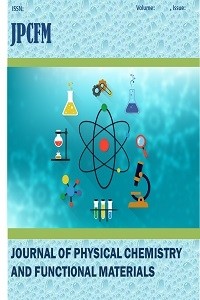Effect of Bioceramic Coating Materials on Surface Hardness, Morphology and Coating Thickness
Effect of Bioceramic Coating Materials on Surface Hardness, Morphology and Coating Thickness
___
- References
- 1 M., Sumita, T., Hanawa, S.H., Teoh, Materials Science and Engineering: C, 2004, 24(6-8), 753-60.
- 2 E.J., Giordani, V.A., Guimaraes, T.B., Pinto, I., Ferreira, International Journal of fatigue, 2004, 26(10), 1129-36.
- 3 V., Singh, K., Marchev, C.V., Cooper, E.I., Meletis, Surface and Coating Technology, 2002, 160(2-3), 249-58.
- 4 C.J., Kirkpatrick, M., Wagner, H., Koehler, F., Bittenger, M. L., Otto, C. L., Klein, Journal of materials science: Materials in medicine, 1997, 8(3), 131-141.
- 5 British Stainless Steel Association. http://www.bssa.org.uk/topics.php?article= 138. 20 June 2013.
- 6 C., Liu, Q., Bi, A., Matthews, Corrosion Science, 2001, 43(10), 1953-61.
- 7 G. A., Battison, R., Gerbasi, M., Porchia, Thin Solid Films, 1994, 239(2), 186-91.
- 8 M., Fallet, H., Mahdjoub, B., Gautier, J.P., Bauer, Journal of non-crystalline solids, 2001, 293, 527-33.
- 9 X., Pang, I., Zhitomirsky, M., Niewczas, Surface and Coatings Technology, 2005, 195(2-3), 138-46.
- 10 B., Aksakal, Y., Say, Ç., Buyukpinar, S., Bakirdere, Ceramics International, 2017, 43(15), 12609-15.
- 11 Y., Say, B., Aksakal, Journal of Materials Science: Materials in Medicine, 2016, 27(6), 105.
- 12 W.G., Billotte, The Biomadical Engineering Handbook, 2000, Vol.1, 31-38.
- 13 P., Ducheyne, S., Radin, M., Heughebaert, J. C., Heughebaret, Biomaterials, 1990, 11(4), 244-54.
- 14 T. P., Hoepfner, E. D., Case, Ceramic Transactions, 1999, 110, 53-54.
- 15 M., Guglielmi, Journal of sol-gel science and technology, 1997, 8(1-3), 443-49.
- 16 K., Izumi, M., Murakami, T., Deguchi, A., Morita, N., Tohge, T., Minami, Journal of the American Ceramic Society, 1989, 72(8), 1465-68.
- 17 Dislich, H., Coatings on glass, in Glass Science and Technology 2, 1984, 52-282.
- 18 M., Mennig, H., Schmidt, Wet coating technology for glass, Short Course, INM, Institut für Neue Materialien, Saarbrücken, Germany, 2000, 11.
- 19 F., Chen, Z. C, Wang, C. J., Lin, Materials letters, 2002, 57(4), 858-61.
- 20 L., Xiangmei, M., Yanan, W., Shuilin, H.C., Man, Applied surface science, 2013, 273, 748-57.
- 21 G. A., Fielding, M., Roy, A., Bandyopadhyay, S., Bose, Acta biomaterialia, 2012, 8(8), 3144-52.
- 22 Y., Say, B., Aksakal, B., Dikici, Ceramics International, 2016, 42(8), 10151-58.
- 23 Y. W., Gu, K. A., Khora, P., Cheangb, Biomaterials, 2003, 24(9), 1603-11.
- 24 S. J., Kalita, H. A., Bhatt, Materials Science and Engineering: C, 2007, 27(4), 837-48.
- 25 R., Palanivelu, S., Kalainathan, A. R., Kumar, Ceramics International, 2014, 40(6), 7745-51.
- 26 S., Kannan, A., Balamurugan, S., Rajeswari, Electrochimica acta, 2004, 49(15), 2395-403.
- 27 R., Murugan, S., Ramakrishna, Composites Science and Technology, 2005, 65(15-16), 2385-406.
- 28 K. A., Gross, V., Gross, C. C., Berndt, Journal of the American Ceramic Society, 1998, 81(1), 106-12.
- ISSN: 2651-3080
- Yayın Aralığı: Yılda 2 Sayı
- Başlangıç: 2018
- Yayıncı: Niyazi BULUT
Effect of Solvents in the Rubber-Metal Bonding Agent
Zinc Ferrite Films Doped with Lanthanides for Gas Sensor Application
Determination of Parameters in Fixed Bed with Industrial Waste Used as Adsorbent
Çiğdem SARICI ÖZDEMİR, Muhammed ONAY
Risk Analysis by FMEA Method in Hotel
Mustafa DAĞ, Zehra Gülten YALÇIN, Ali OZ, Ercan AYDOĞMUŞ
The Structural Properties of MoO3 Thin Films Grown by Magnetron Sputtering Technique
Beyhan TATAR, Canan YÖNEY, Dilek DEMİROĞLU
Effect of Silane in the Rubber-Metal Bonding Agent
Geostatistical Modelling for 134Cs Released from The Fukushima Radioactive Fallout
Sevim BİLİCİ, Ahmet BİLİCİ, Fatih KÜLAHCI
Cihat AYDIN, Handan AYDİN, Mustafa TAŞKIN
Investigation of the Availability of Apricot Shell in Adsorption Equilibrium Studies
